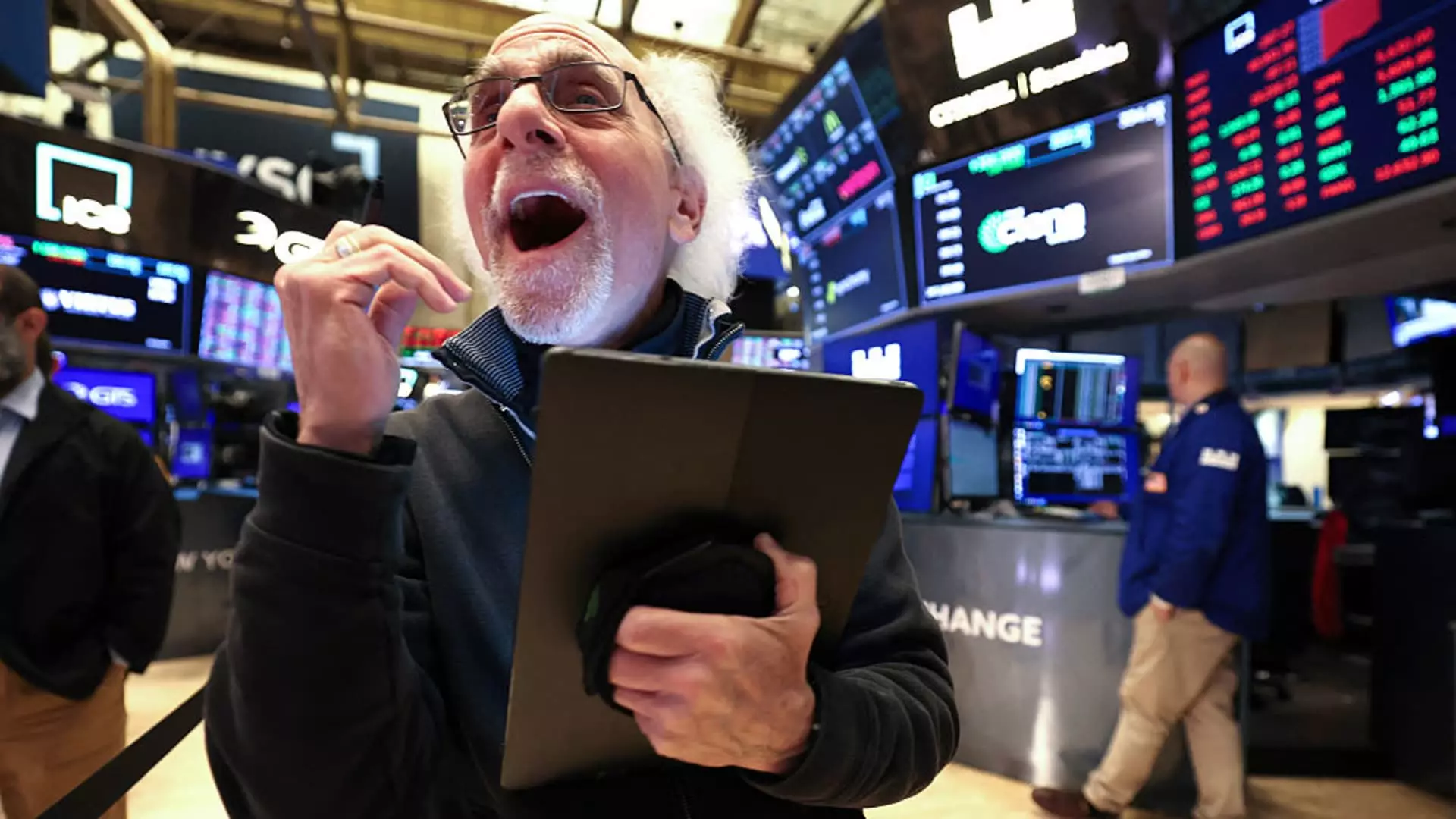The U.S. stock market has recently reached new heights, with the S&P 500 climbing above 6,180 and the Nasdaq breaking the 20,300 mark. These are impressive headline numbers, especially considering the market’s sharp tumble earlier this year triggered by trade tensions and tariff threats under the Trump administration. Yet, while the bullish surge since April is undeniable—stocks have rallied more than 20% after the April lows—the euphoria veils unresolved structural issues. Investors must carefully differentiate between rallying hope and genuine economic strength. The Federal Reserve’s cautious stance and simmering geopolitical conflicts, particularly in the Middle East, continue to hang over the market as potential catalysts for renewed volatility. This rally, spectacular as it appears, is more a reflection of selective investor confidence in certain sectors rather than an across-the-board economic breakthrough.
The AI Boom: Technology’s Double-Edged Sword
One of the most striking drivers fueling this market rally is the renewed surge of investment into artificial intelligence (AI) technologies. Companies like Nvidia have soared to record valuations, with the chipmaker’s gargantuan market capitalization hinting at the breadth of investor optimism. It’s tempting to view Nvidia’s performance and that of Broadcom as proof of robust growth. However, this enthusiasm carries a risk of overheating. The chip industry’s dependency on geopolitical factors—especially U.S.-China relations and export controls—remains precarious. The AI sector benefits from a virtuous cycle: increased cloud computing demands translate to more chips, and therefore more revenue. Still, this virtuous cycle is not immune to external shocks. Furthermore, the concentration of AI stock gains in a handful of hyperscalers and tech giants underscores a troubling market narrowness. When only a few mega-cap stocks lead a rally, the broader economic growth story may be less convincing.
The Defensive Pivot: Why Cybersecurity and Defense Stocks Matter Now More Than Ever
Geopolitical tensions, particularly those escalating in volatile regions, have turned defense stocks and cybersecurity firms into sanctuaries for weary investors. Companies such as CrowdStrike and Palo Alto Networks have hit or approached all-time highs, fueled by an increasing demand for protection against virtual threats. This pivot signals a growing awareness that traditional market drivers—corporate earnings and consumer spending—are no longer the sole levers influencing investment decisions. Instead, uncertainty over international stability and cyber warfare is pushing capital towards “safe” sectors that can weather storms better. From a center-right liberal economic perspective, this trend underscores the need for prudent defense spending balanced against free-market dynamics. Excessive government intervention risks inefficiencies, but underinvestment could expose vulnerabilities in both national security and market stability.
Economic Resilience? A Case for Cautious Optimism
Federal Reserve Chair Jerome Powell’s description of the economy as “still solid” despite persistent inflation signals a nuanced reality. While economic cruising control may have sidelined aggressive rate hikes for now, this environment remains fragile. The Federal Reserve’s choice to “wait” before adjusting monetary policy reflects both confidence and wariness—a balancing act that investors must understand deeply. On one hand, stable interest rates encourage Wall Street deal-making, with Goldman Sachs notably capitalizing on a spate of IPOs for companies like Chime and eToro. On the other hand, consumer spending, which underpins financial firms like Capital One, faces inherent risks amid mixed economic signals. The recent deal between Capital One and Discover, though bullish in the short term, surfaces concerns about market consolidation and long-term credit risk. The key lesson is that economic resilience does not equate to invulnerability. Investors ignoring these subtleties risk being blindsided by the eventual reckoning.
Investor Sentiment Versus Market Fundamentals: A Persistent Disconnect
Ultimately, the market’s surge over recent months highlights the enduring tension between investor sentiment and underlying fundamentals. The speculative frenzy around AI stocks, defense equities, and financial institutions reflects optimism gained partly from aggressive monetary policies and other short-term tailwinds. However, this enthusiasm often sidelines deeper analyses of trade policy uncertainty, interest rate trajectories, and global conflict escalations. A seasoned, center-right liberal investor would caution against getting swept up in the market’s euphoric momentum without scrutinizing these headwinds. Market highs are only meaningful if underpinned by durable economic growth and sound corporate strategies. As history repeatedly demonstrates, ignoring these realities can lead to painful corrections.
In this context, the recent market rally is less a sign of unequivocal victory and more a complex interplay of hope, fear, and tactical bets in an uncertain global landscape. Understanding these dynamics is essential before diving headlong into the market’s promising yet fragile highs.

